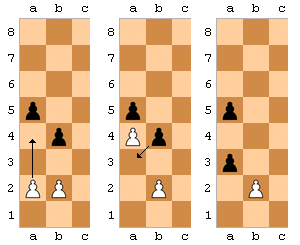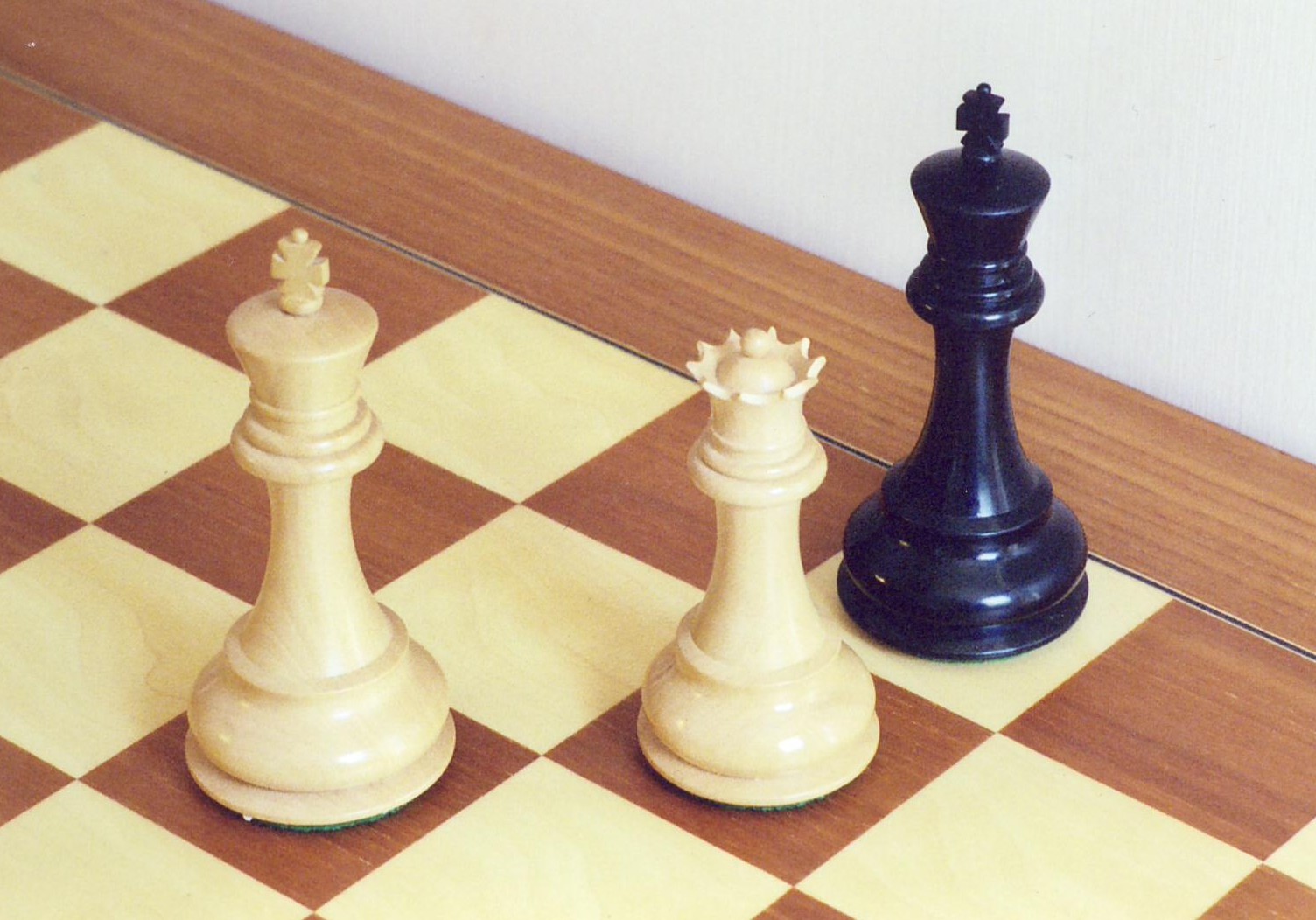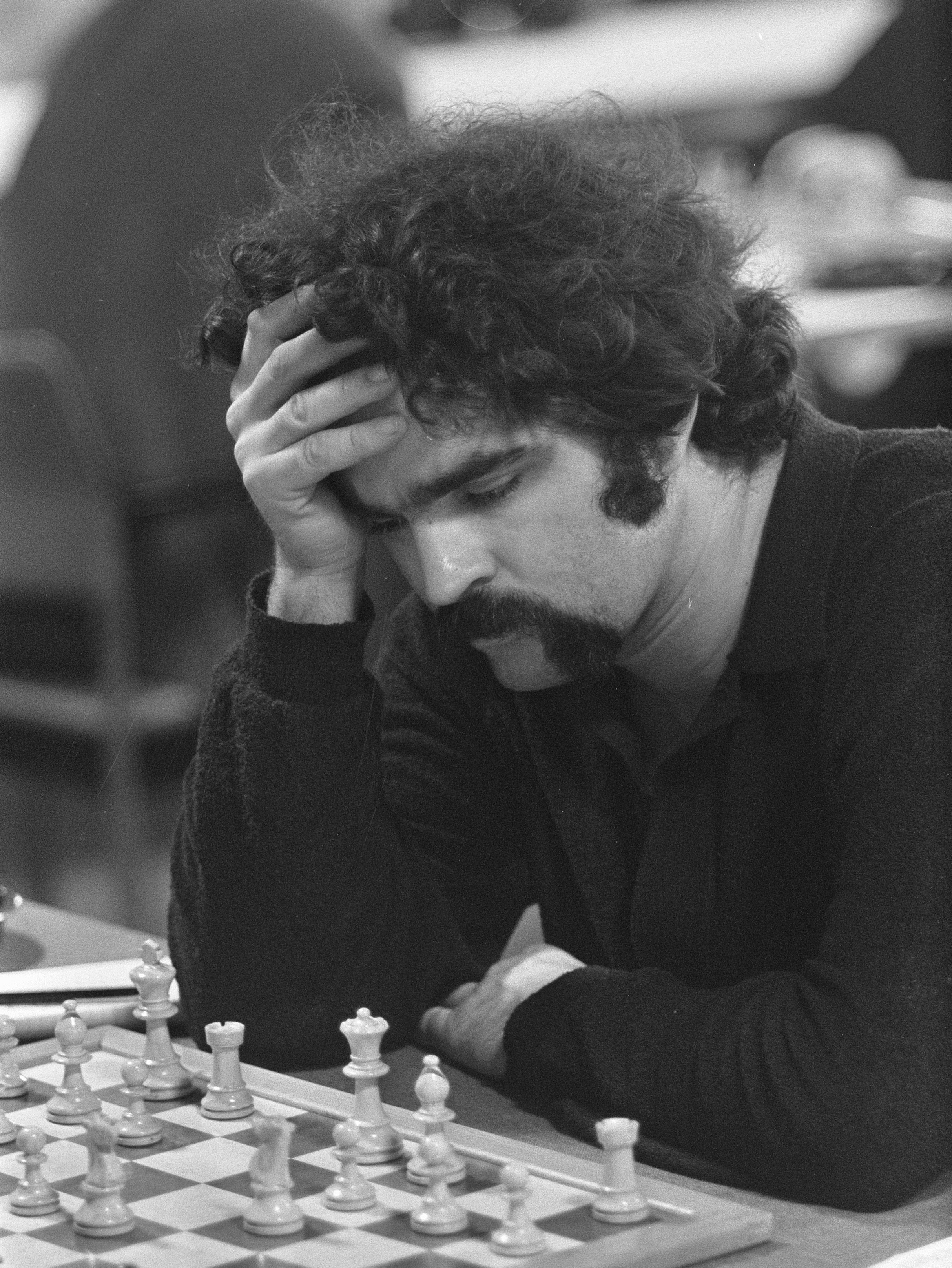|
Retrograde Analysis
In chess problems, retrograde analysis is a technique employed to determine which moves were played leading up to a given position. While this technique is rarely needed for solving ordinary chess problems, there is a whole subgenre of chess problems in which it is an important part; such problems are known as ''retros''. Retros may ask, for example, for a mate in two, but the main puzzle is in explaining the history of the position. This may be important to determine, for example, if castling is disallowed or an ''en passant'' capture is possible. Other problems may ask specific questions relating to the history of the position, such as, "Is the bishop on c1 promoted?". This is essentially a matter of logical reasoning, with high appeal for puzzle enthusiasts. Sometimes it is necessary to determine if a particular position is legal, with "legal" meaning that it could be reached by a series of legal moves, no matter how illogical. Another important branch of retrograde analysi ... [...More Info...] [...Related Items...] OR: [Wikipedia] [Google] [Baidu] |
Chess Problems
A chess problem, also called a chess composition, is a puzzle set by the composer using chess pieces on a chess board, which presents the solver with a particular task. For instance, a position may be given with the instruction that White is to move first, and checkmate Black in two moves against any possible defence. A chess problem fundamentally differs from over-the-board play in that the latter involves a struggle between black and white, whereas the former involves a competition between the composer and the solver. Most positions which occur in a chess problem are 'unrealistic' in the sense that they are very unlikely to occur in over-the-board play. There is a good deal of specialized jargon used in connection with chess problems; see glossary of chess problems for a list. Definition The term "chess problem" is not sharply defined: there is no clear demarcation between chess compositions on the one hand and puzzles or tactical exercises on the other. In practice, however, t ... [...More Info...] [...Related Items...] OR: [Wikipedia] [Google] [Baidu] |
Castling
Castling is a move in chess. It consists of moving the king two squares toward a rook on the same and then moving the rook to the square that the king passed over. Castling is permitted only if neither the king nor the rook has previously moved; the squares between the king and the rook are vacant; and the king does not leave, cross over, or finish on a square attacked by an enemy piece. Castling is the only move in chess in which two pieces are moved at once. Castling with the is called ''kingside castling'', and castling with the is called ''queenside castling''. In both algebraic and descriptive notations, castling kingside is written as 0-0 and castling queenside as 0-0-0. Castling originates from the ''king's leap'', a two-square king move added to European chess between the 14th and 15th centuries, and took on its present form in the 17th century. Local variations in castling rules were common, however, persisting in Italy until the late 19th century. Castling does not ... [...More Info...] [...Related Items...] OR: [Wikipedia] [Google] [Baidu] |
En Passant
''En passant'' (, "in passing") is a method of capturing in chess that occurs when a pawn captures a horizontally adjacent enemy pawn that has just made an initial two-square advance. The capturing pawn moves to the square that the enemy pawn passed over, as if the enemy pawn had advanced only one square. The rule ensures that a pawn cannot use its two-square move to safely skip past an enemy pawn. Capturing ''en passant'' is permitted only on the turn immediately after the two-square advance; it cannot be done on a later turn. The capturing move is sometimes notated by appending the abbreviation e.p. Rules The conditions for a pawn to capture an enemy pawn ''en passant'' are as follows: * the enemy pawn advanced two squares on the previous move; * the capturing pawn attacks the square that the enemy pawn passed over. If these conditions are met, the capturing pawn can move diagonally forward to the square that the enemy pawn passed, capturing the enemy pawn as if it h ... [...More Info...] [...Related Items...] OR: [Wikipedia] [Google] [Baidu] |
Proof Game
A proof game is a type of retrograde analysis chess problem. The solver must construct a game starting from the initial chess position, which ends with a given position (thus proving that that position is reachable) after a specified number of moves. A proof game is called a shortest proof game if no shorter solution exists. In this case the task is simply to construct a shortest possible game ending with the given position. When published, shortest proof games will normally present the solver with a diagram - which is the final position to be reached - and a caption such as "SPG in 9.0". "SPG" here is short for "shortest proof game" and the "9.0" indicates how many moves must be played to reach the position; 9.0 means the position is reached after black's ninth move, 7.5 would mean the position is reached after seven and a half moves (that is, after white's eighth move) and so on. Sometimes the caption may be more verbose, for example "Position after white's seventh move. How did ... [...More Info...] [...Related Items...] OR: [Wikipedia] [Google] [Baidu] |
Discovered Check
In chess, a discovered attack is a direct attack revealed when one piece moves out of the way of another. Discovered attacks can be extremely powerful, as the piece moved can make a threat independently of the piece it reveals. Like many chess tactics, they often succeed because the opponent would be unable to meet two threats at once unless one of the attacked pieces can simultaneously move away from its own attack and capture the other attacking piece. While typically the consequence of a discovered attack is the gain of , they do not have to do this to be effective; the tactic can be used merely to gain a tempo. at MarkLowery.net If the discovered attack is a |
Checkmate
Checkmate (often shortened to mate) is any game position in chess and other chess-like games in which a player's king is in check (threatened with ) and there is no possible escape. Checkmating the opponent wins the game. In chess, the king is never actually captured—the player loses as soon as the player's king is checkmated. In formal games, it is usually considered good etiquette to resign an inevitably lost game before being checkmated. If a player is not in check but has no legal move, then it is '' stalemate'', and the game immediately ends in a draw. A checkmating move is recorded in algebraic notation using the hash symbol "#", for example: 34.Qg3#. Examples A checkmate may occur in as few as two moves on one side with all of the pieces still on the board (as in Fool's mate, in the opening phase of the game), in a middlegame position (as in the 1956 game called the Game of the Century between Donald Byrne and Bobby Fischer), or after many moves with as few as t ... [...More Info...] [...Related Items...] OR: [Wikipedia] [Google] [Baidu] |
Tim Krabbé
Tim Krabbé (born 13 April 1943) is a Dutch journalist, novelist and chess player. Krabbé was born in Amsterdam. His writing has appeared in most major periodicals in the Netherlands. Once a competitive cyclist, he is known to Dutch readers for his novel ''De Renner'' (''The Rider''), first published in 1978 and translated into English in 2002, of which ''The Guardian's'' Matt Seaton wrote: "Nothing better is ever likely to be written on the subjective experience of cycle-racing". English readers know him primarily for ''The Vanishing'' (Dutch: Spoorloos, literally: "Traceless" or "Without a Trace"), the translation of his 1984 novel ''Het Gouden Ei'' (''The Golden Egg''), which was made into an acclaimed The Vanishing (1988 film), 1988 Dutch film for which Krabbé co-wrote a script. A poorly received American The Vanishing (1993 film), remake was made in 1993. In 1997 he published ''De grot'', translated as ''The Cave'' and published in the U.S. in 2000. In 2009, he wrote the "Bo ... [...More Info...] [...Related Items...] OR: [Wikipedia] [Google] [Baidu] |
Nenad Petrović (chess Composer)
Nenad Petrović, (September 7, 1907, in Zagreb, Kingdom of Croatia-Slavonia-Dalmatia, Austria-Hungary (now Croatia) – November 9, 1989, in Zagreb, Socialist Republic of Croatia, Yugoslavia) was a Croatian chess problemist. Chess career Nenad Petrović was the first Croatian Grandmaster of chess composition and World Champion in 1947 in the solving of chess problems. In 1951, he started the chess problem magazine ''Problem'' which in 1952 became the official organ of the Permanent Commission for Chess Composition of FIDE (PCCC). Petrović was the creator of the "Codex of chess composition", the starter and editor of 13 volumes of FIDE Albums, containing the best compositions from the period 1914–82. From 1956, he was the vice-president, and from 1958 the president of PCCC. He organized the first World Congress of Chess Composition in Piran, 1958. In 1974, Petrović was made an honorary lifelong president of PCCC. As a composer, he published some 650 problems, of which 121 ... [...More Info...] [...Related Items...] OR: [Wikipedia] [Google] [Baidu] |
Backward Induction
Backward induction is the process of reasoning backwards in time, from the end of a problem or situation, to determine a sequence of optimal actions. It proceeds by examining the last point at which a decision is to be made and then identifying what action would be most optimal at that moment. Using this information, one can then determine what to do at the second-to-last time of decision. This process continues backwards until one has determined the best action for every possible situation (i.e. for every possible information set) at every point in time. Backward induction was first used in 1875 by Arthur Cayley, who uncovered the method while trying to solve the infamous Secretary problem. In the mathematical optimization method of dynamic programming, backward induction is one of the main methods for solving the Bellman equation. In game theory, backward induction is a method used to compute subgame perfect equilibria in sequential games. The only difference is that optimizat ... [...More Info...] [...Related Items...] OR: [Wikipedia] [Google] [Baidu] |
Backward Chaining
Backward chaining (or backward reasoning) is an inference method described colloquially as working backward from the goal. It is used in automated theorem provers, inference engines, proof assistants, and other artificial intelligence applications. In game theory, researchers apply it to (simpler) subgames to find a solution to the game, in a process called ''backward induction''. In chess, it is called retrograde analysis, and it is used to generate table bases for chess endgames for computer chess. Backward chaining is implemented in logic programming by SLD resolution. Both rules are based on the modus ponens inference rule. It is one of the two most commonly used methods of reasoning with inference rules and logical implications – the other is forward chaining. Backward chaining systems usually employ a depth-first search strategy, e.g. Prolog. How it works Backward chaining starts with a list of goals (or a hypothesis) and works backwards from the consequent to the ... [...More Info...] [...Related Items...] OR: [Wikipedia] [Google] [Baidu] |
Raymond Smullyan
Raymond Merrill Smullyan (; May 25, 1919 – February 6, 2017) was an American mathematician, magician, concert pianist, logician, Taoist, and philosopher. Born in Far Rockaway, New York, his first career was stage magic. He earned a BSc from the University of Chicago in 1955 and his PhD from Princeton University in 1959. He is one of many logicians to have studied with Alonzo Church. Life He was born on May 25, 1919, in Far Rockaway, Queens, New York, to an Ashkenazi Jewish family. His father was Isidore Smullyan, who was born in Russia but who emigrated to Belgium when young, and whose native language was French. His father was a businessman who graduated from the University of Antwerp. His mother was Rosina Smullyan (née Freeman), who was born and raised in London. She was a painter, who was also an actress. Both parents were musical, his father playing the violin and his mother playing the piano. He was the youngest of three children. His eldest brother, Emile Benoit Smul ... [...More Info...] [...Related Items...] OR: [Wikipedia] [Google] [Baidu] |
.png)




